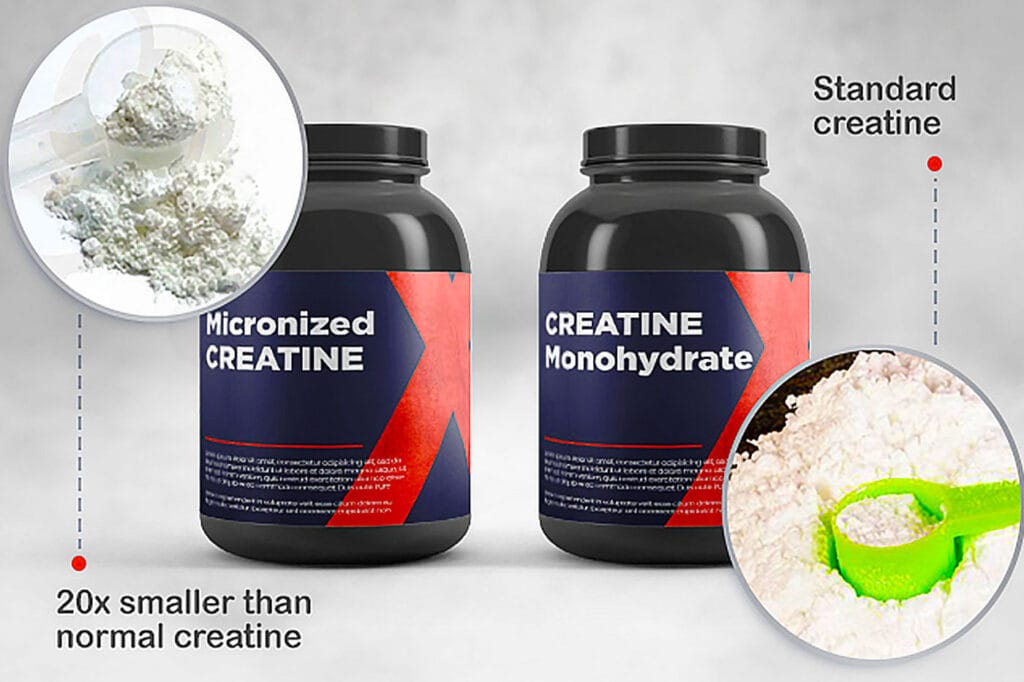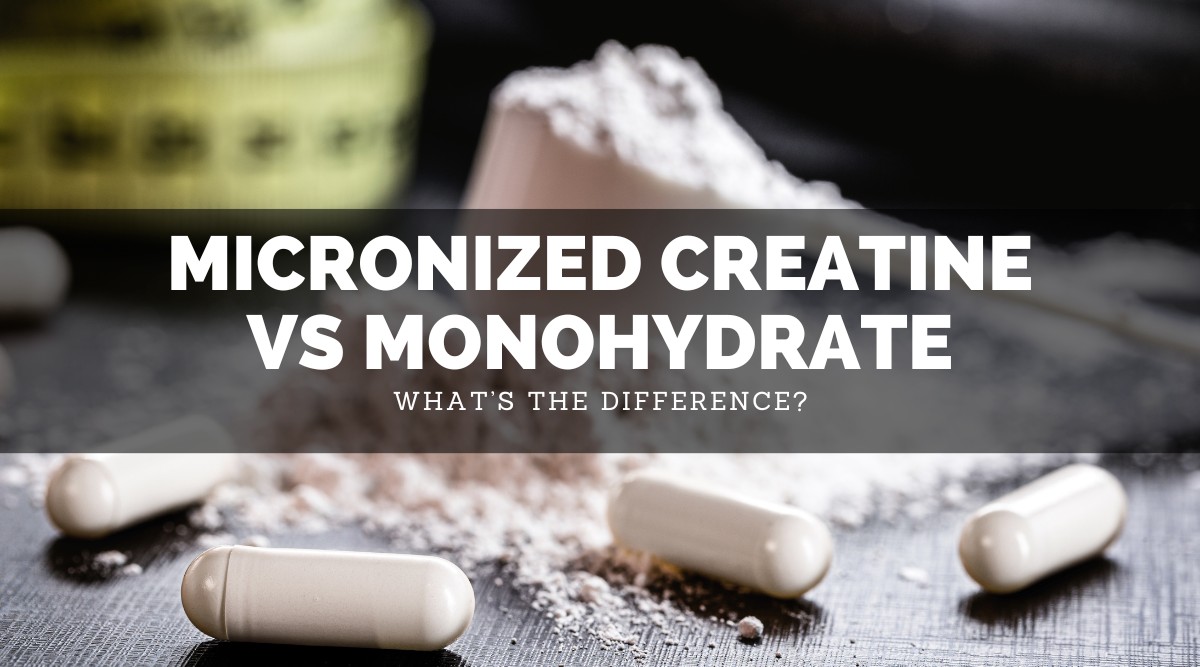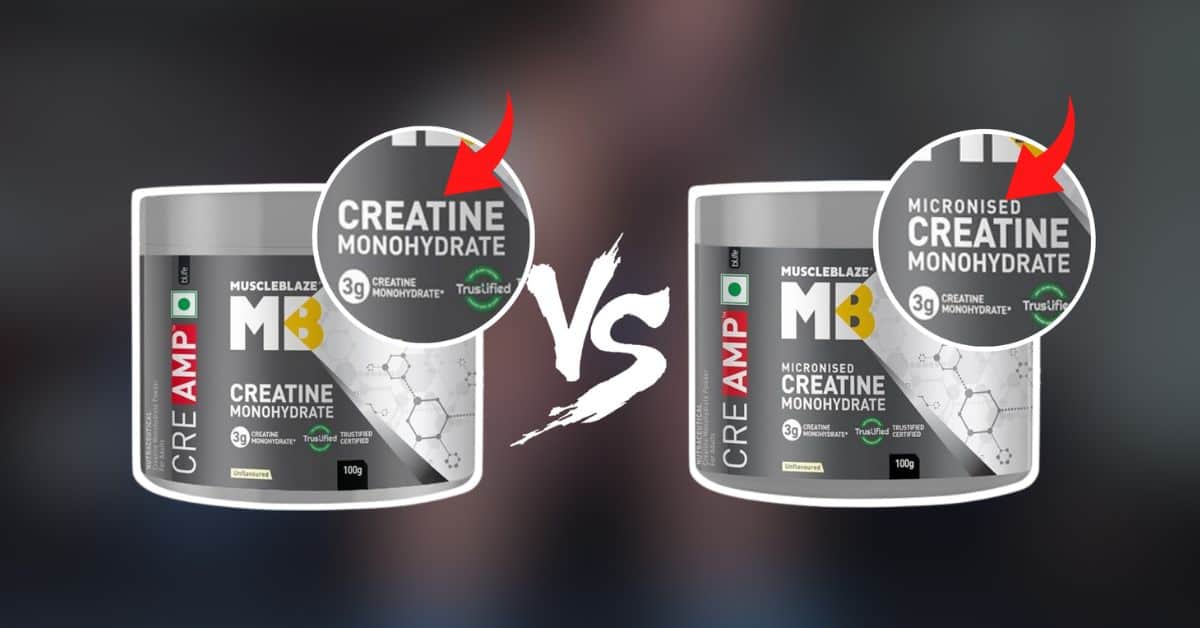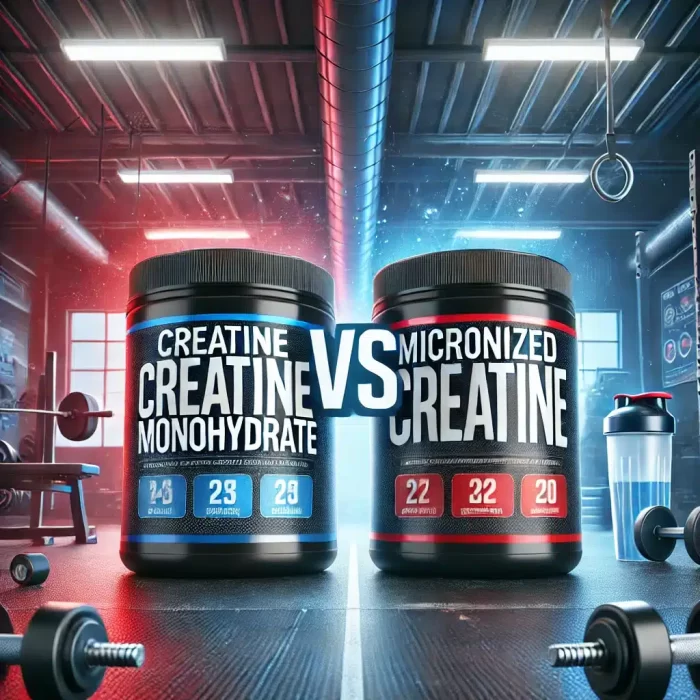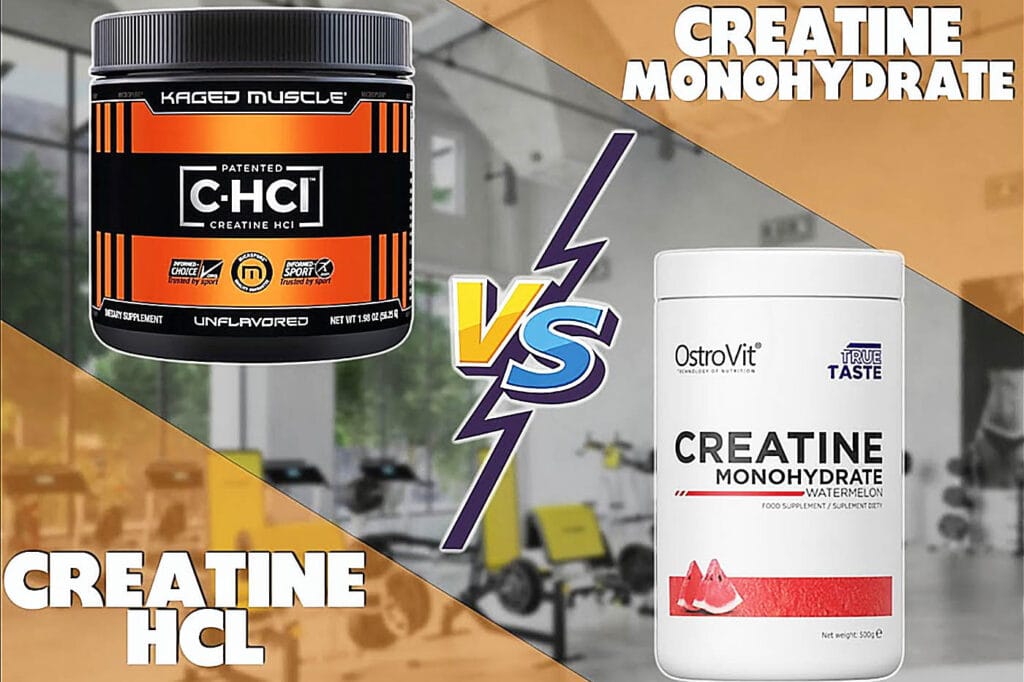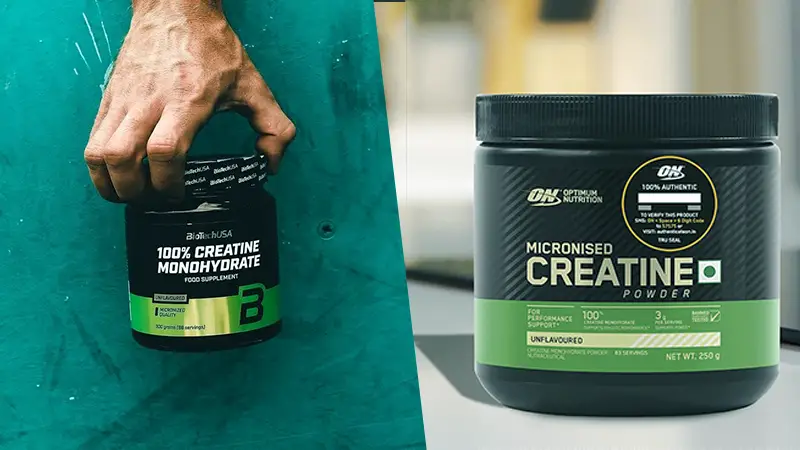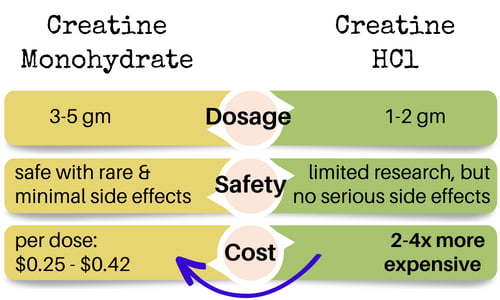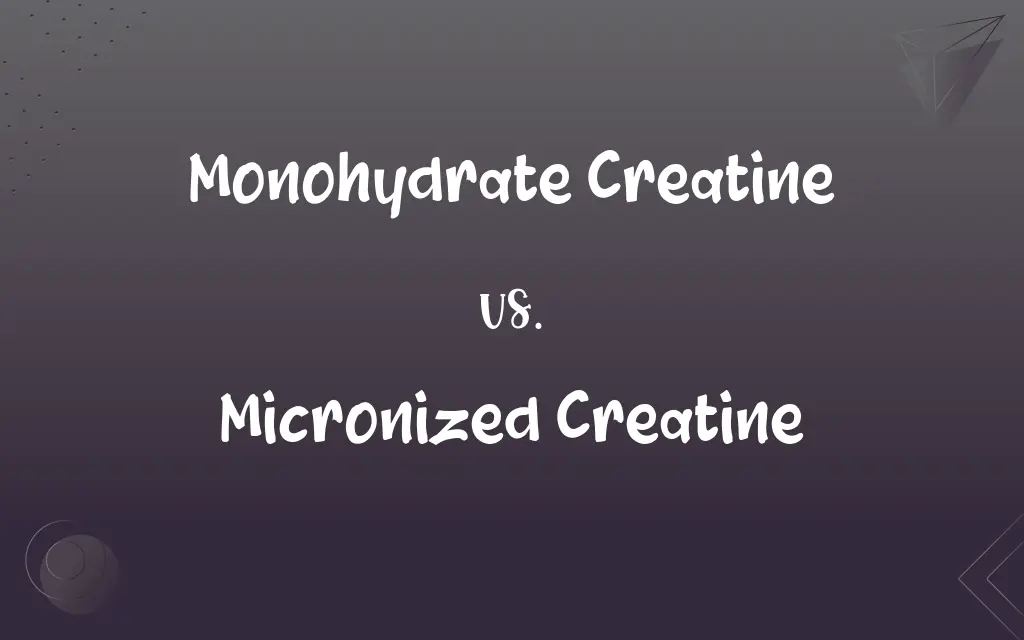Difference Between Creatine Micronized And Monohydrate
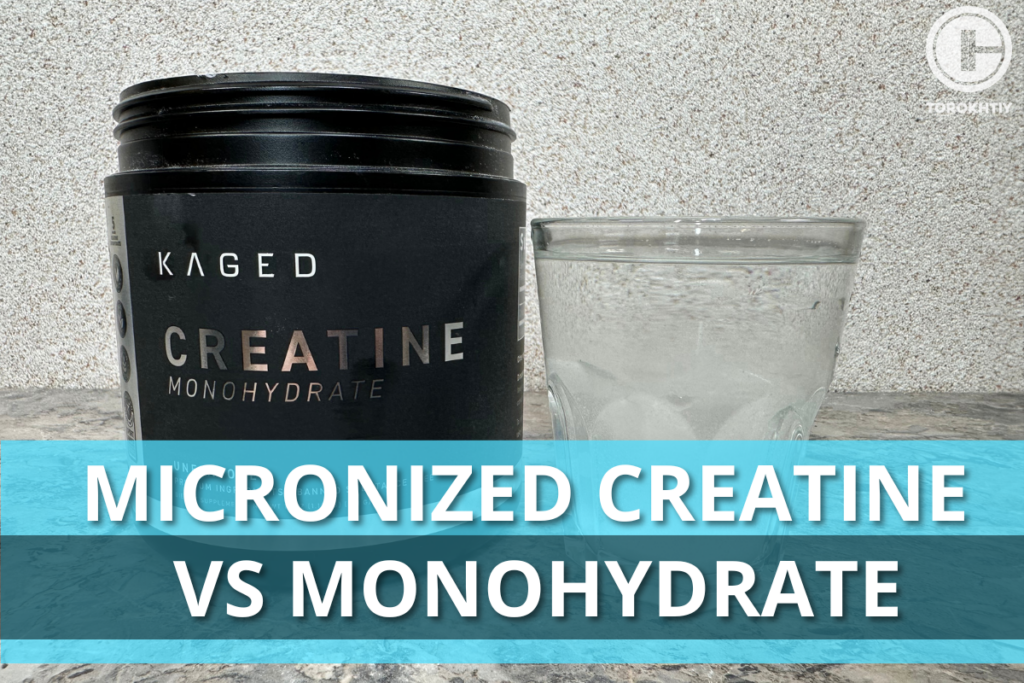
Imagine walking into a supplement store, overwhelmed by rows and rows of tubs filled with powders promising enhanced performance and recovery. Among them, you spot creatine, a name synonymous with strength and muscle growth. But then you notice something: some labels boast "Creatine Monohydrate," while others highlight "Micronized Creatine." What's the difference? Is one superior to the other? This is the question many fitness enthusiasts ponder.
At the heart of this lies a seemingly simple distinction: particle size. Both creatine monohydrate and micronized creatine are essentially the same compound, but micronization refines the creatine powder into smaller, more easily dissolved particles. This translates to potentially better absorption and reduced gastrointestinal discomfort, making it a popular choice for many athletes and active individuals.
Understanding Creatine Monohydrate
Creatine monohydrate is the most widely researched and well-established form of creatine. It's the gold standard against which all other forms are typically compared.
The chemical formula for creatine monohydrate is C4H9N3O2·H2O. This indicates that each creatine molecule is bound to one water molecule, hence the term "monohydrate."
Its history dates back to the early 19th century, but its performance-enhancing benefits weren't recognized until the 1990s. Since then, countless studies have demonstrated its effectiveness in improving strength, power output, and muscle mass when combined with resistance training.
Creatine works by increasing the availability of phosphocreatine in muscles. This helps regenerate adenosine triphosphate (ATP), the primary energy source for muscle contractions during high-intensity exercise.
Think of ATP as the fuel that powers your workouts. Creatine helps replenish that fuel faster, allowing you to push harder and longer. This is the fundamental mechanism behind creatine's benefits.
The Rise of Micronized Creatine
Micronized creatine is a refined form of creatine monohydrate. It undergoes a process that reduces the particle size of the powder.
This micronization process typically involves milling the creatine monohydrate into finer particles, often around 20 times smaller than regular creatine monohydrate. This significantly impacts its properties.
The primary advantage of micronization is improved solubility. Smaller particles dissolve more readily in water and other liquids.
This enhanced solubility can lead to better absorption in the digestive system. Meaning more creatine reaches your muscles and less remains undigested in your gut.
Many users report experiencing less bloating and stomach discomfort with micronized creatine compared to regular creatine monohydrate. This is a major selling point for individuals with sensitive stomachs.
Comparing the Two: Key Differences
The core difference boils down to particle size and its subsequent impact on solubility and absorption. While both deliver creatine, the micronized form aims to overcome some of the limitations associated with the monohydrate form.
Solubility
Micronized creatine dissolves much more easily in liquids. You'll notice less settling at the bottom of your shaker cup compared to creatine monohydrate.
This is a practical advantage, as it ensures you're actually consuming the intended dose of creatine. It also prevents that gritty texture that some find unpleasant.
Absorption
Due to its enhanced solubility, micronized creatine is often believed to be absorbed more efficiently by the body.
This doesn't necessarily mean a drastically larger amount of creatine reaches your muscles, but it can contribute to reduced digestive issues and potentially faster uptake.
Digestive Comfort
This is where micronized creatine truly shines for many users. Bloating, cramping, and stomach upset are common complaints associated with creatine monohydrate.
The smaller particle size of micronized creatine minimizes these issues, making it a more comfortable option for those with sensitive digestive systems. It’s important to listen to your body.
Cost
Micronized creatine typically comes at a higher price point than regular creatine monohydrate. The extra processing involved in micronization adds to the manufacturing cost.
Consider your budget and tolerance to potential digestive discomfort when making your decision. Sometimes the extra cost is worth the improved comfort.
Scientific Evidence and Research
While anecdotal evidence often favors micronized creatine for its improved solubility and reduced side effects, scientific research is still evolving. Many studies on creatine don't specifically compare micronized versus non-micronized forms.
However, the general consensus in the scientific community is that both forms are effective for increasing muscle creatine stores and enhancing performance.
"The efficacy of creatine monohydrate is well-documented,"states a report from the Journal of the International Society of Sports Nutrition.
Some studies suggest that micronization may lead to slightly faster absorption, but the overall impact on muscle creatine levels and performance remains similar. More research is needed to definitively confirm the advantages of micronized creatine.
Making the Right Choice for You
Ultimately, the choice between creatine monohydrate and micronized creatine is a personal one. Consider your individual needs, preferences, and budget.
If you're on a tight budget and don't experience any digestive issues with creatine monohydrate, it remains a perfectly viable option. It's the most cost-effective and thoroughly researched form.
If you're prone to bloating or stomach discomfort when taking creatine, micronized creatine might be a better choice. The improved solubility can significantly reduce these side effects.
Experimenting with both forms can also help you determine which one works best for your body. Start with a small dose and gradually increase it to assess your tolerance.
It is important to follow dosage guidelines. Consulting with a healthcare professional or registered dietitian can provide personalized recommendations.
Beyond the Basics: Other Creatine Forms
While creatine monohydrate and micronized creatine are the most common, there are other forms available on the market. These include creatine ethyl ester, creatine hydrochloride (HCL), and buffered creatine.
Each form claims to offer unique benefits, such as improved absorption or reduced side effects. However, the scientific evidence supporting these claims is often limited or inconclusive.
Creatine monohydrate remains the most researched and cost-effective option for most individuals. Exercise caution when considering more exotic or expensive forms of creatine, as their efficacy may not be fully established.
A Final Thought
Creatine, in its various forms, is a powerful tool for enhancing athletic performance and supporting muscle growth. Whether you choose creatine monohydrate or micronized creatine, remember that consistency and proper dosage are key.
Combine creatine supplementation with a balanced diet, consistent resistance training, and adequate rest to maximize its benefits. Listen to your body and adjust your intake as needed.
Ultimately, the most effective supplement is the one that you can consistently use and that helps you achieve your fitness goals. Don't get caught up in the hype or marketing claims; focus on what works best for you and your individual needs. A sustainable, informed approach is the path to success.

